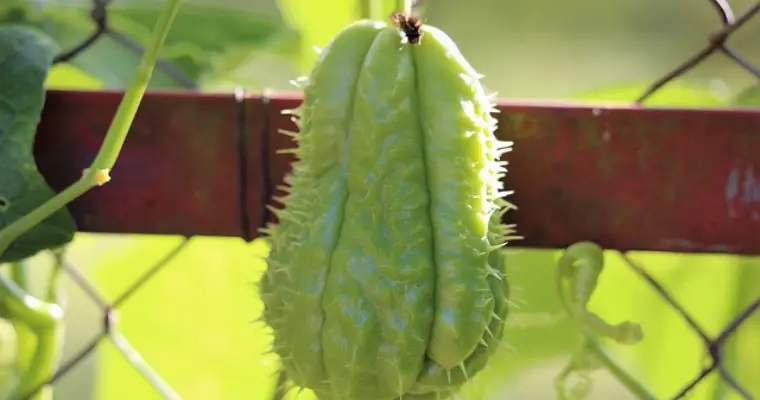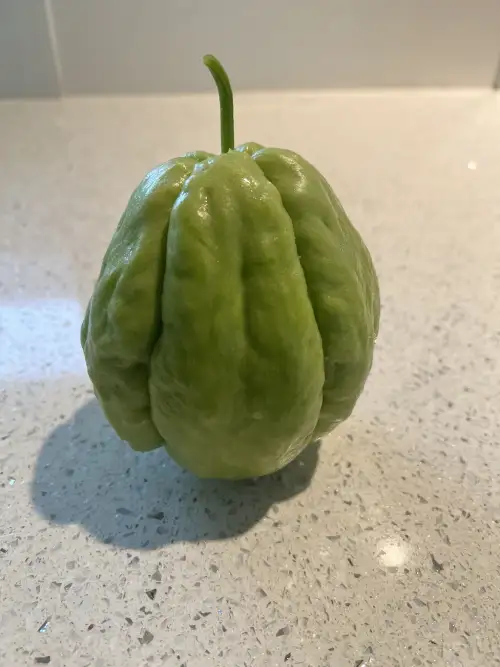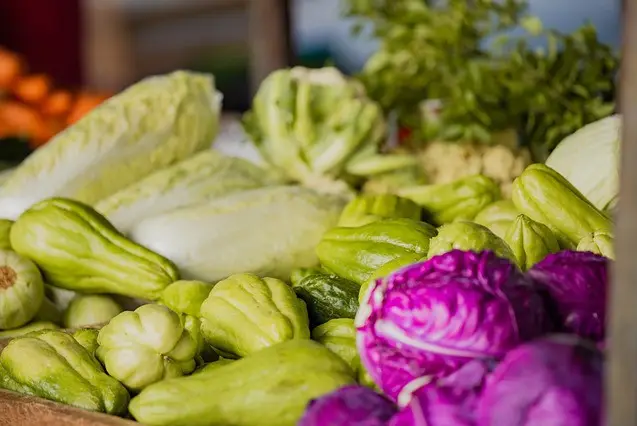Is Chayote A Fruit?

Sweet Fruit or Versatile Veggie?
In the world of culinary delights and wonders there are numerous intriguing ingredients that challenge our understanding and classification. One such ingredient is the Chayote, a green, pear-shaped vegetable, or is Chayote a fruit?
The ambiguity surrounding this versatile produce has perplexed many food enthusiasts and botanists alike. In this blog, we will delve into the fascinating world of is Chayote a fruit or vegetable and attempt to decipher its true identity.
Origins and Botanical Background
The Chayote, scientifically known as Sechium edule has a rich history that traces back to its native lands in Central America, particularly Mexico. Cultivated by ancient civilizations, including the Aztecs and Mayans.
Chayote has been an integral part of their diets for centuries. From its Mesoamerican origins the Chayote found its way to other parts of the world through the Spanish explorers during the Age of Discovery.
Botanically speaking, Chayote belongs to the Cucurbitaceae family the same family that includes cucumbers, melons, and pumpkins. The plant is a climbing vine with heart-shaped leaves, and it produces elongated fruits with a single large seed in the center.
These fruits vary in color from light green to a pale, wrinkled cream. While this description may make it sound like a typical fruit, but it’s not that simple.

Is Chayote A Fruit or Vegetable? The Debate:
The classification of Chayote as a fruit or vegetable largely hinges on botanical versus culinary definitions. Botanically, fruits develop from the fertilized ovaries of flowers and contain seeds which means that, strictly speaking, Chayote should be considered a fruit.
However, from a culinary perspective, it is usually prepared and eaten as a vegetable similar to zucchini or squash. This discrepancy often leads to confusion and culinary dilemmas.
In many cuisines Chayote is used in savory dishes, including stews, soups, stir-fries, and salads. Its mild flavor and slightly crunchy texture make it a popular ingredient in various culinary traditions worldwide.
Interestingly, it can also be used in sweet dishes like desserts and preserves, further blurring the lines between fruit and vegetable.
Today, Chayote is widely cultivated and consumed in various countries, including Mexico, Costa Rica, Brazil, the Philippines, India, China, Thailand and the US states of Hawaii and Florida.
Its adaptability to different climates and soils has made it a popular ingredient in both traditional and fusion cuisines across the globe.
List of the Names for Chayote from around the World:
Hawaiian: Pipinola
Philippines: Sayote, Sayote Gulay
Indonesia: Waluh, Labu Siam, Labu Jipang
Mexico-Central America: Chayote
United States Mainland: Chayote Squash
Brazil: Chuchu
Costa Rica, Puerto Rico, DR: Tayota, Tayote
Haiti: Mirliton
Jamaica: Cho-cho
Trinidad and Tobago: Christophene, Chow-Chow
China: hé zhǎng guā (Mandarin)
Thailand: Fak Khiao
India: Chow Chow
South Africa: Chayote
Australia: Choko
Nutritional Benefits
Regardless of its classification Chayote offers an array of health benefits. Low in calories and high in fiber, it aids in digestion and helps maintain a healthy weight. It is also a good source of vitamins and minerals, including vitamin C, potassium, and folate, which are essential for overall well-being.
Moreover, Chayote contains antioxidants that can help neutralize harmful free radicals in the body reducing the risk of chronic diseases.
Health Benefits of Chayote:
- Nutrient-Rich: Is a low-calorie vegetable packed with essential nutrients. It is an excellent source of dietary fiber, vitamin C, vitamin B6, potassium, and folate. These nutrients support digestion, boost immunity, and contribute to overall well-being.
- Antioxidant Properties: Contains antioxidants like vitamin C and various phytonutrients, including flavonoids and carotenoids. These compounds help combat oxidative stress, reduce inflammation, and protect against chronic diseases.
- Weight Management: As a low-calorie and fiber-rich food, chayote can aid in weight management. Its high-water content promotes a feeling of fullness, reducing the likelihood of overeating and supporting healthy weight loss.
- Digestive Health: The dietary fiber in chayote supports digestive health by promoting regular bowel movements, preventing constipation, and maintaining a healthy gut microbiome.
- Blood Sugar Regulation: Has a low glycemic index, meaning it causes a slower and steadier rise in blood sugar levels. This characteristic makes it an excellent choice for individuals with diabetes or those aiming to maintain stable blood sugar levels.
Culinary Versatility:
Additionally, one of the reasons Chayote has gained popularity worldwide is its culinary versatility. Its neutral taste allows it to adapt to various cooking techniques and flavor profiles. When cooked, it absorbs the flavors of other ingredients, making it an excellent addition to both savory and sweet dishes.
In Latin American Cuisines Chayote is often used in salads or cooked in traditional stews or like a plant-based Chayote Relleno. In Asia, it finds its way into stir-fries, noodle dishes and side dishes contributing its unique texture and taste.
Some innovative chefs have even incorporated chayote into pies, tarts, and jams, embracing both its sweet and savory potential.

Benefits in a Whole Food Plant-Based Diet:
Chayote is a highly beneficial addition to a plant-based diet for several reasons. Firstly, it is low in calories, making it an excellent choice for those aiming to maintain or lose weight.
It is also rich in dietary fiber, promoting healthy digestion and aiding in weight management.
Furthermore, Chayote is packed with essential vitamins and minerals. It is a good source of vitamin C, an antioxidant that supports a healthy immune system and collagen production.
It also contains vitamin K, which is essential for bone health, and several B vitamins that contribute to energy metabolism. Additionally, Chayote provides minerals like potassium, magnesium, and manganese, all of which play crucial roles in maintaining overall health.
Daily Culinary Uses:
Chayote’s versatility lies in its ability to be used in a variety of culinary applications. Its mild, crisp, and slightly sweet flavor makes it suitable for both savory and sweet dishes. Here are some popular ways to incorporate chayote into a plant-based diet:
- Salads and Slaws: Grate or julienne chayote to add a refreshing crunch to your salads or use it as a base for coleslaws.
- Stir-fries and Curries: Slice or dice chayote and sauté it with an assortment of vegetables and aromatic spices for a nutritious stir-fry or curry dish.
- Soups and Stews: Add chayote to vegetable-based soups and stews to enhance the texture and nutritional value.
- Pickles and Preserves: Chayote’s firm texture makes it an excellent candidate for pickling or preserving in vinegar-based solutions.
Conclusion
In closing, the debate over is Chayote a fruit or vegetable highlights the fascinating intersections of botany and culinary arts. While it is botanically a fruit, its culinary applications have firmly placed it in the vegetable category.
Regardless of its classification, Chayote remains a delightful and nutritious ingredient that continues to surprise and delight food enthusiasts around the world.
So, the next time you encounter this green wonder at your local farmers market or on your plate, appreciate its duality and embrace its versatility in both savory and sweet creations!
Is Chayote a fruit? Let us know in the comments below if we answered that question?
Be sure to sign up for your > Free 12 Tips Food Guide <
Cheers,
Plantaful Life Team
Disclaimer: The information shared in this blog post and on our website is for educational and informational purposes only. We are here to inspire and support you on your plant-based journey. However, always prioritize your health and consult with your trusted healthcare provider for personalized advice. By using our website, you acknowledge and agree that you have read and understood this medical disclaimer, and you acknowledge the significance of seeking professional medical advice for your specific health needs.
*Reference: Food Chemistry Volume 275 March 1, 2019
Hey there,
Love this article.
I was drawn to it because I looked at the fruit/vegetable and thought this looks like a cho cho, Not Chayoyi, I wonder if they are related in some way, and low and behold it is the same fruit but with a different name.
I love these, although you can’t easily get these in the UK, though if I am ever passing an international food store, I will always pick one up.
I’ve always known it as a fruit, but it’s interesting how there is debate over whether it fulfills fruit or vegetable determination.
I actually didn’t release cho cho was that healthy! I need to go and get some :o)
Your article has provided so much detail on its health benefits and flavour profile. very interesting read. Thank you!
Cherie :o)
Hi Cherie,
You are welcome, we are so happy you found the post on Chayote helpful. The Chayote goes by many different names while being enjoyed around the world, hopefully you will be able to find it fresh in your specialty market or ask them to bring it in for you.
We grow Chayote in the Plantaful Life Garden and happens to be one of my family’s favorite dishes.
Please check back to the site often as we will be sharing some of our top recipes to take advantage of this amazing fruit/vegetable.
Thank you once again for sharing your thoughts with us. Your feedback is truly appreciated!
Cheers, Plantaful Life